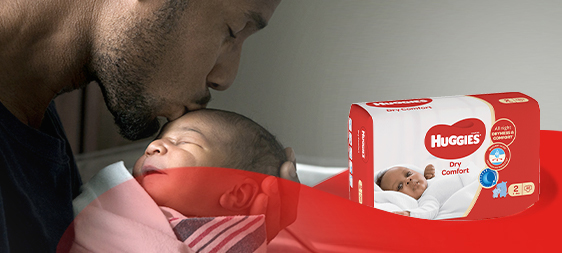The question “how do I get rid of my tummy” may be one of the questions a health and fitness professional is asked the most. Middle-age spread seems to hit most men at some time, while women increasingly become aware of both their gender's impact on where body fat increasingly likes to hangout.
And while the flabby bits we can grab might look unattractive to some and feel uncomfortable, it's actually the deeper visceral fat that is of main concern. We know that such fat deposited around the abdominal area is associated with a number of health conditions. So let's get the low-down on abdominal fat, and get to grips with the issues and what can be done to improve our health outcomes.
Fat physiology 101
We generally develop our fat cells at specific times during our lives, such as during infancy and adolescence (when you have a growth spurt) and as a consequence there is an increase in body fat. In fact, - incorrect eating habits and lifestyle during these crucial times (1-2 years of age and 12-14 years of age) may lead to greater than average fat cell generation. When the body is unable to utilise the intake of dietary fat, the excess is stored in fat cells. Fat cells under normal circumstances do not increase in number, rather it's the amount of fat inside each fat cell that increases. Yes, that's right we are stuck with them.
Here's a breakdown of the 3 most common types of fat:
1. White Fat
White fat is much more plentiful than brown, experts agree. The job of white fat is to store energy and produce hormones that are then secreted into the bloodstream. Small fat cells produce a "good guy" hormone called adiponectin, which makes the liver and muscles sensitive to insulin, thereby making us less susceptible to diabetes and heart disease. When people become fat, the production of adiponectin slows down or shuts down, setting them up for disease.
2. Subcutaneous Fat
Subcutaneous fat is found directly under the skin. It's the fat that's measured using skin-fold calipers to estimate your total body fat. In terms of overall health, subcutaneous fat in the thighs and buttocks, for instance, may not be as bad and may have some potential benefits, but on the belly, this is another story.
3. Visceral Fat
Visceral or "deep" fat wraps around the inner organs and spells trouble for your health. How do you know if you have it? - If you have a large waist or belly, of course you have visceral fat. Visceral fat increases your risk for diabetes, heart disease, stroke, and even dementia.
In men, the abdomen is the greatest area of fat cell size and numbers and in women, to the dismay of most, it is the hips, buttocks and thighs .
Women generally have a larger proportion of body mass as fat, and are more likely to deposit fat subcutaneously and on their lower extremities; men are more likely to deposit fat in the abdominal region.
Check it out!
Waist circumference (WC)
Increased waist circumference has been shown to be a great predictor of a number of diseases. By regularly measuring your waist circumference helps you screen for possible health risks that come with being overweight and obesity.
If most of your fat is around your waist rather than at your hips, you're at a higher risk for heart disease and type 2 diabetes.
This risk goes up with a waist size that is greater than 89 cm for women or greater than 102 cm for men. To correctly measure your waist, stand and place a tape measure around your middle, just above your hipbones. Measure your waist just after you breathe out.
Fat, food and body
So what happens when you eat a fatty meal, or any meal for that matter? Let's take a brief look at the chain of events:
Prior to a meal blood sugars are low and insulin is also low / normal (A normal blood sugar level is less than 100 mg/dL).
This condition allows small fats (fatty acids) to leave fat cells and enter the blood, then enter the muscle cells where fat can be used as energy. We all like the sound of that!
However, when blood insulin levels are high (most commonly after a meal that is rich in sugars), fatty acids are unable to exit the fat cells. (A normal blood sugar level after a meal is less than 140 mg/dL).
Insulin (known as our fat hormone for good reason) is the one responsible for making our body store fat in the fat cells and preventing the release of fat into the blood for use.
So how can we get this stuff moving?
Well, as much as we all want to believe if we do hundreds of sit-ups we will lose our tummy, this just isn't going to happen. The bad news is that body fat cannot be lost from specified areas, regardless of the activity we engage in to lose it. However, it is possible that certain exercise conditions may improve weight loss and the maintenance of a healthy body weight. Yeah, some good news!
High intensity exercise may well be useful in creating positive changes in body composition, as it can significantly reduce body weight, percentage of body fat, fat mass and waist circumference. Also, aerobic exercise in particular seems most effective at reducing body fat and also abdominal body fat in the overweight and obese. Resistance training with weights may also have other positive health effects.
Logic and physiology suggests that simply reducing the amount of fat we consume will prevent increasing amounts of fat to be stored. Also, we know that we are able to
reduce energy intake far more easily than we can increase the expenditure of it. To burn fuel in the body is a process that is very complex and not a speedy one. Cutting back on the other hand is very easily done. Adding in a slight increase in energy expenditure can make a huge difference. And watch the alcohol! It has almost as much energy as fat and, because it is a sugar, it causes the release of insulin, that irritating fat storage hormone. Alcohol is not our friend!
Bottom line is, you have to use more energy than what you take in.
Something to think about
Consider drinking more green tea. Certain compounds, specifically catechins, in green tea have a fat burning effect. So rather than that early morning cup of coffee or tea - consider either Rooibos or Green tea. They are lower in tannin, which causes fluid loss.
In summary
It's only in conjunction with appropriate exercise and diet that improvements can be made that will benefit your health. Eating less may not necessarily be the only answer, nor are high intensity, high volume workouts - the best weight management solution is:
The consumption of a healthy diet rich in nutrients and health-giving compounds that provides a healthy amount of energy; along with
Increased levels of activity; and
Exercise that can be sustained without risk and can be enjoyed and maintained over a long period of time.



















